The Ultimate Guide to Bearded Dragons
If you've ever wanted a pet dragon that's handsome, sociable, and doesn't breathe fire, a lovable "beardie" is worth considering.
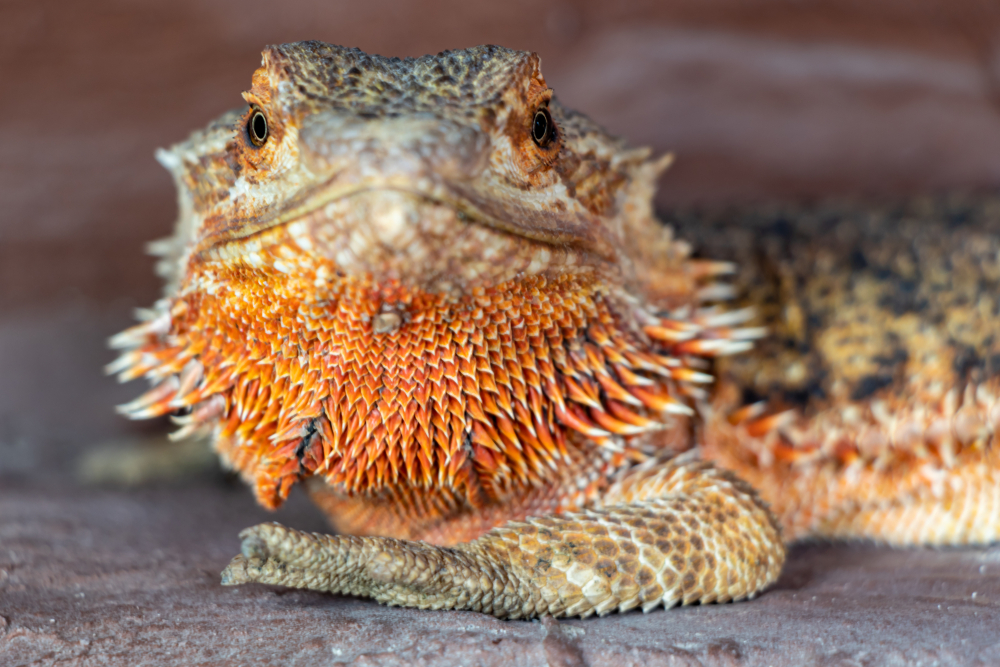
Bearded dragons are scale-covered lizards in the reptile family commonly sold as pets at stores, reptile conventions, and by reptile enthusiasts. They have a low, wide profile to hug the surfaces they're climbing and a long tail to help with balance. And what's that about a beard? It's not hairy, but rather some loose, scaly skin that hangs below the chin. You'll find bearded dragons in hues of dusty yellow, gray-brown, and rusty red. Intrigued? We thought so!
Here's everything you need to know about being a bearded dragon pet owner:
A Brief History of the Bearded Dragon
How Long Do Bearded Dragons Live?
Why Bearded Dragons Make Good Pets
Setting Up the Ideal Tank for a Bearded Dragon
What Do Bearded Dragons Eat?
How Do I Handle a Bearded Dragon?
Ongoing Care Tips for Bearded Dragons
A Brief History of the Bearded Dragon
The central bearded dragon (Pogona vitticeps) is one of the most popular varieties of beardies among reptile pet owners. Centrals may also be known as inland bearded dragons or the western bearded dragon.These pets are native to Australia where they love to soak in the desert sun and scour woodland areas for insects. You might also find a beardie exploring the grasslands in arid to semi-arid areas.
How Long Do Bearded Dragons Live?
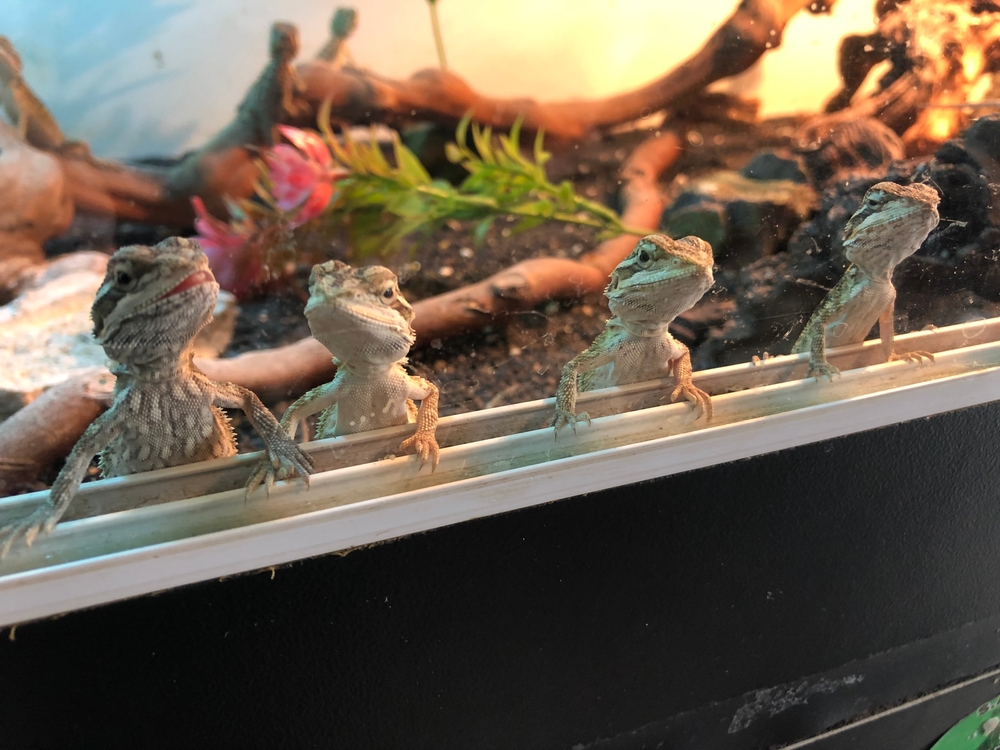
Because of its lifespan, it's a good idea to have multiple members of the household learn about the pet's needs and care. For example, if your teenage son really wants a beardie, then goes off to college, a parent or younger sibling should step in to take over as primary caretaker while the son is away at school.
Why Bearded Dragons Make Good Pets
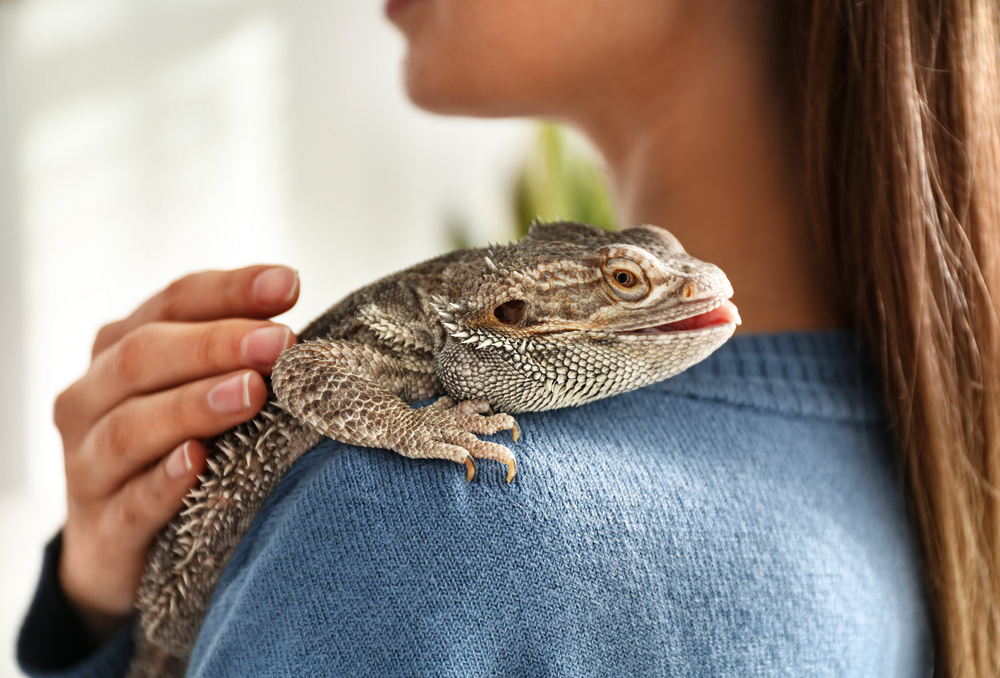
When it comes to choosing the perfect beardie pet, remember these reptiles like living solo. You'll become the bearded dragon's best friend, so there's no need to get a scaly companion to keep the pet content.
Setting Up the Ideal Tank for a Bearded Dragon
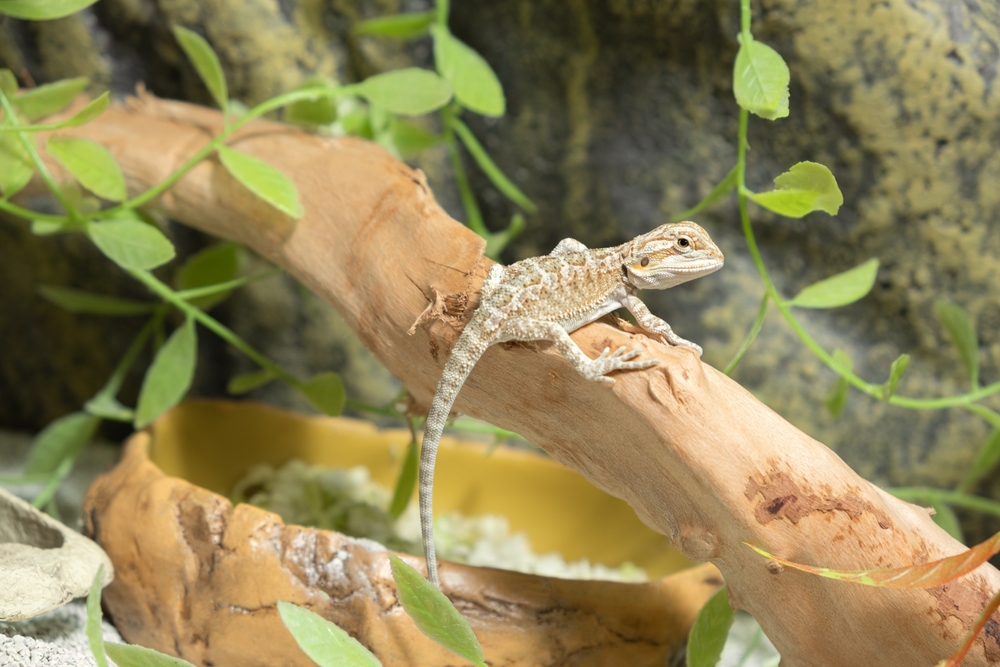
As a bonus, we've made this step super simple for you by putting together a Deluxe Bearded Dragon Kit. This is an excellent option for those short on time or who want an easy-to-wrap box for gift-giving. Simply add a big bow and surprise your kiddo, friend, or loved one.
Choosing a Habitat or Tank
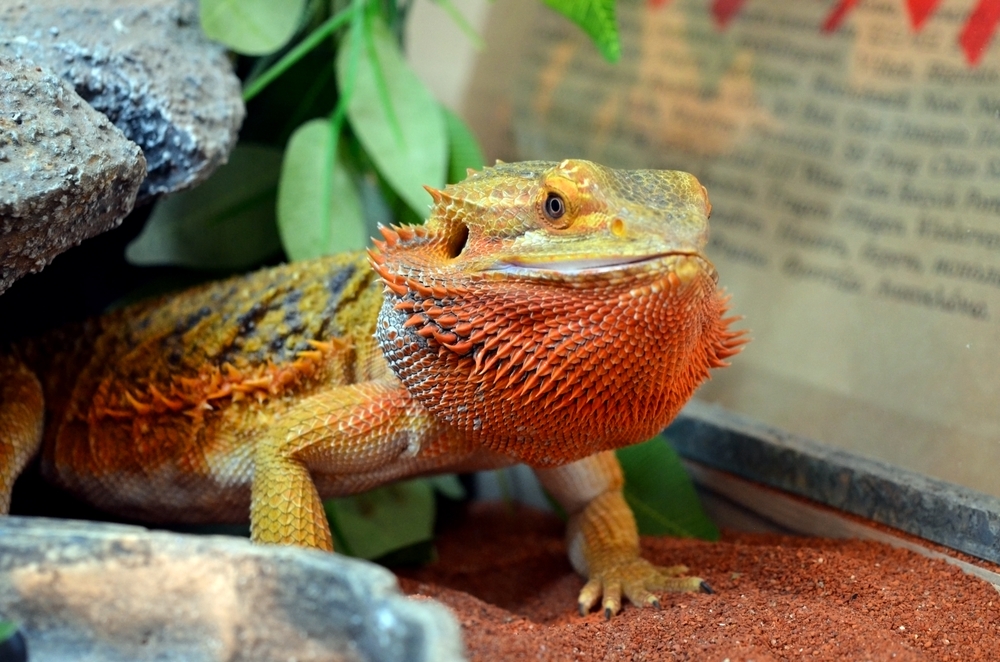
It's best to invest in the pet's adult home even if you purchase a hatchling. Why? Bearded dragons quickly grow to approximately 2 feet in length including body and tail. We recommend you use nothing smaller than the 40 Breeder Zilla Critter Cage. It features an escape-proof mesh top and a sliding lockable lid to keep the pet safe. That means the beardie stays in, and the curious toddler or nosey cat stays out!
Selecting Lighting & Heating
Every cold-blooded reptile needs accessory lighting and heating to help replicate its natural environment, regulate its day/night schedule, and promote proper digestion. Browse the Zilla Habitat Guide and Lighting & Heating Guide for specific details regarding heating and lighting for a variety of reptile pets.When it comes to bearded dragons, choose bulbs that offer both UVA and UVB lighting and warmth, such as the Desert 50 (Canopy Series Fluorescent UVA/UVB bulb) and 50W Mini Halogen bulb mounted to a Heat & UVB Basking Fixture. This will help you keep the enclosure at a toasty 100–110°F during the daytime. Position the fixture at one end of the habitat so the opposite end will naturally be cooler, at about 80–90°F. In the evening, with the fixture off, the preferred night temperature for a bearded dragon is 70–75°F.
Bearded dragons specifically need UVB light to reduce the risk of a type of bone disease that can lead to deformations of the bones and eventually be fatal.
During cooler weather, or if you're having trouble elevating the temperature of your pet's home, try using a heat mat to add extra warmth. You can also reposition the habitat to a warmer, interior room in your home, away from drafty windows or doors.
Finding Reptile Decor
Bearded dragons love to climb, explore, and burrow. To nurture these natural movements, add playful decor to the pet's enclosure. Large flat rocks to bask on, tall grasses to poke through, and faux tree branches to maneuver help mimic the animal's natural Australian environment. Get started by checking out the Shale Rock Den and Herp Hotel.Using Bedding (Substrate)
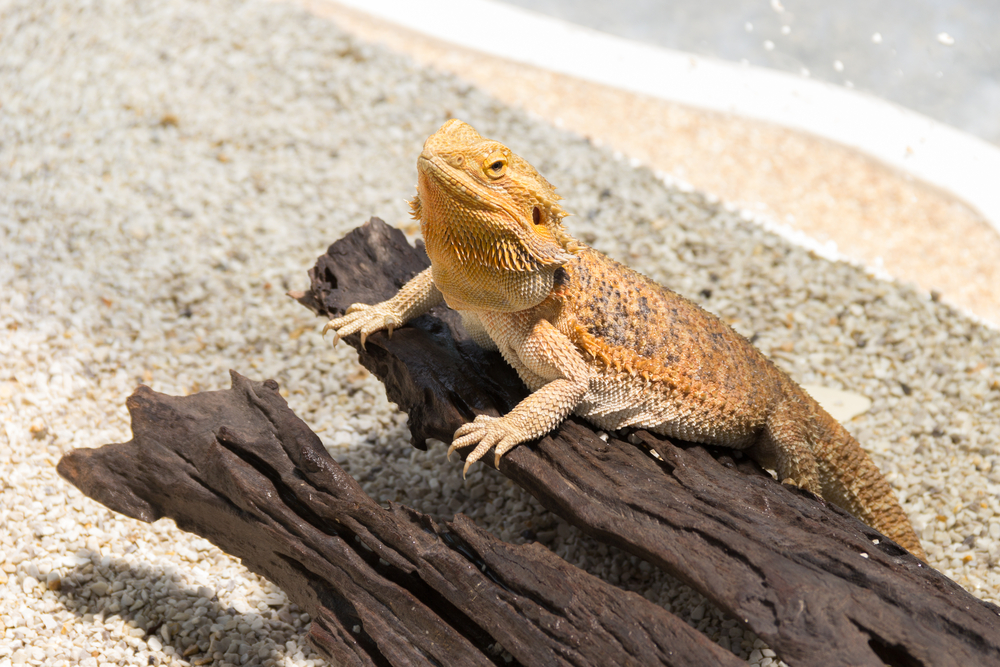
The bottom of your bearded dragon's enclosure needs bedding, also known as substrate. This gives the pet something to play on and can add to the desert or woodland theme of the enclosure.
We recommend using Zilla Desert Blend made from finely crushed English Walnut shells. The biggest benefit of this substrate is its inability to become compacted in the pet's digestive system if accidentally ingested. Instead, the pet can easily pass the walnut material in their feces. This type of bedding also stimulates a bearded dragon's natural desire to burrow and dig. For a happy pet, use 1- to 2-inches of bedding at the bottom of the habitat.
If you'dprefer a smooth substrate, Zilla Terrarium Liners work great for bearded dragons. They look like no-pile green or brown carpet that can be cut to perfectly fit the bottom of the habitat. The liners are soft, not edible, and treated with a biodegradable enzyme to help keep odors to a minimum. Simply wash, dry, and reuse the liner when it's time to clean your pet's home.
Cleaning the Tank
Your bearded dragon will live, eat, and go to the bathroom in its habitat, so that means routine cleanings are necessary to keep your pet healthy and home odor-free.
Each day, pick up the obvious waste you can see, like feces or uneaten food. You can use the Zilla Corner Litter Scoop to easily remove soiled bedding and other waste.
Plan to deep clean your bearded dragon's enclosure every two to three months. This will reduce odors and bacteria growth and freshen up your scaly buddy's home. Here's what to do:
Step 1: Remove your pet.
This is a good time for the pet to enjoy playtime with a family member or friend. Or, the beardie can hang out in a Zilla Micro Habitat filled with a shallow warm water bath that reaches part way up his belly and sides. This will keep him warm and aid in the shedding process, if needed.
Step 2: Turn off and unplug the lighting and heating fixtures.
Unplug any heat mats or other warming elements. Set them aside to cool off on a durable surface, such as a tile floor or stone countertop.
Step 3: Remove all decor.
Place the decor in a sink filled with hot water and a squirt of dish soap. Use a scrub brush to clean the items. Then, rinse the decor in a sink filled with a 10% bleach water solution. That's about 1 cup of bleach for a half-filled average-size sink basin. Rinse the decor with clear water and allow it to dry on a towel.
Step 4: Remove the bedding from the habitat.
Use the Corner Litter Scoop to remove the soiled bedding and place it in the waste can or compost bin. If you use a substrate liner, wash it with the decor in Step 3.
Step 5: Wipe out the empty habitat.
Use a sponge soaked with hot water and dish soap. Be sure to remove lingering debris in the corners and stuck to the tank's walls. Then, rinse with clean water using a sprayer attachment on your sink or a clean sponge. Finally, towel dry the habitat or allow it to air dry.
Step 6: Clean the glass or acrylic sides.
The Zilla Terrarium Cleaner will add shine to the glass or acrylic surfaces, deodorize the habitat, and create an anti-static barrier to reduce dust build-up from the bedding. Simply spray on the clear surfaces of the habitat, then wipe off using a soft towel. Place the habitat back where it usually sits.
Step 7: Add new bedding and arrange the freshened decor.
This is your chance to mix things up and place the climbing branches, bowls, and rocks in new positions for your pet to explore. Think of it like rearranging your living room or bedroom. Sometimes it's fun to try something new!
Step 8: Reset the lighting and heating fixtures.
Plug them in and let the reptile's home get toasty warm before you put your pet back inside. This may take up to 20 minutes or so. Use a digital thermometer to test the tank temperature on both the warmer basking end and the cooler end.
Step 9: Put your beardie back into his habitat.
Enjoy watching him explore his clean home. Be sure to secure the lid so you don't have a reptile Houdini moment.
What Do Bearded Dragons Eat and Drink?
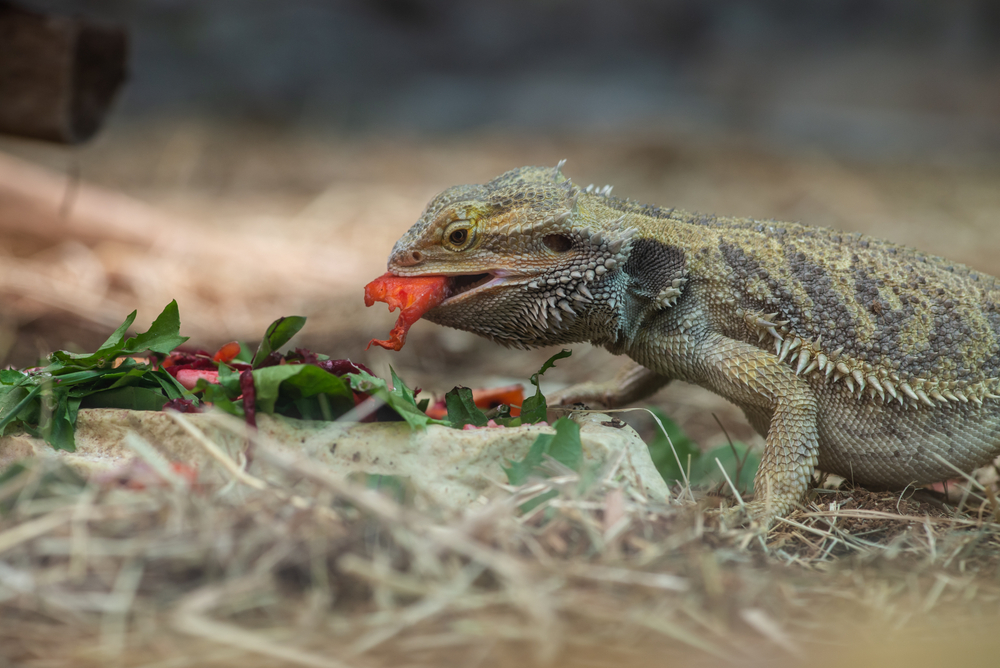
Bearded dragons are omnivores which means they gobble down a variety of veggies and meat proteins. They enjoy being offered food daily, alternating between insects like crickets, super worms, roaches, and mealworms one day and vegetables high in calcium and vitamin D3 the next.
Got greens? Keep a stock of mustard greens, dandelion greens, and collard greens in the refrigerator, and you'll have a beardie that looks forward to mealtime. They also go for thawed frozen mixed vegetables including peas, carrots, and beans. If you're a foodie, get creative in the kitchen and make your beardie one of these fun salads or this smoothie-like slurry (second recipe on the list). Your lizard is sure to find these creations lip-smacking good!
When it comes to picking out juicy insects for your pet, be sure they are no larger than half the width of the beardie's head. So if your adult pet measures 3-inches wide from eye to eye, choose creepy crawlies no bigger than 1.5-inches long.
To boost the nutritional value of live foods, offer the insects Zilla Gut Load Cricket Drink prior to feeding your beardie. Then, at mealtime, spray the insects with Zilla Vitamin Supplement to aid in calcium metabolism and Calcium Supplement to boost the bone health of your bearded dragon.
Some dragon owners prefer to offer an all-in-one balanced diet of Zilla Reptile Munchies Omnivore. This dehydrated mix of plant and animal matter makes feeding easy and preferred by some pets if this is what they ate at the pet store. You can also offer Bearded Dragon Extruded Food Pellets. Give these options a try to see if your dragon prefers fresh foods or dehydrated meals. You might discover your pet enjoys a bit of both!

When it comes to water for drinking, offer a shallow dish of water. And tap water is safe to use. However, if you have a water softener that yields high-sodium content water, be mindful. Beardies with a health condition may be affected by sodium. It's best to use bottled water for these dino pets instead.
Note: Older dragons will drink less than younger pets and may get enough moisture from vegetables.
For more information on feeding reptile pets, check out the Zilla Feeding Guide.
How Do I Handle a Bearded Dragon?
Handle a bearded dragon with a gentle touch while sitting. If they happen to jump or run off, they won't fall to the ground. Try relaxing on a soft surface, like a couch or bed, when it's playtime with your dragon. Then, pet the animal in the direction of the scale growth. Beardies are also fond of belly rubs, and some enjoy head massages. Work slowly with your pet to learn what type of touch is most enjoyed.
Is your pet extra playful? You can get creative and build obstacle courses for your pet to maneuver. Remember, these guys love to climb, so put those children's building blocks or cardboard boxes from the recycling bin to good use. Your bearded buddy might also enjoy nudging a crinkle cat ball toy or exploring a ferret Flex-e Fun-nel. Bottom line: Have fun!
To reduce the risk of spreading illness, it's a good idea to wash your hands before and after handling any pet, including a bearded dragon.
Safety note: As you browse beardies at the pet store and possibly handle one, be aware that they will puff up, hiss, and try to run away when scared. And they may bite if provoked. This is painful, breaks the skin, and may bruise. Although beardies do have venom glands, a bite from this type of reptile doesn't trigger any long-term effects or the need for medical attention. Simply wash the area with a mild disinfectant soap and allow the bite to heal.
Ongoing Care for Bearded Dragons
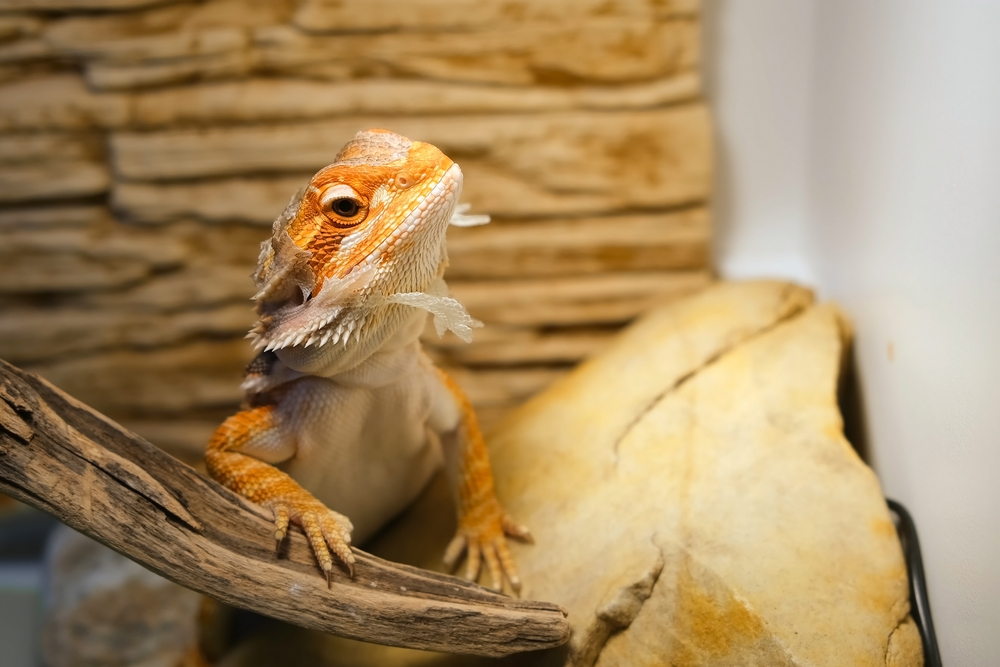
Common Issues
Like all pets, bearded dragons are susceptible to illnesses and medical conditions.
If your pet doesn't have ample access to fresh, clean water, they might face behavioral issues, constipation, dehydration, gout, kidney disease, and problems shedding.
All reptiles, beardies included, are at risk for a type of bone disease. This can occur if a beardie consumes an unbalanced, poor diet and doesn't have access to UVB lighting and warm enough temperatures. It's reversible if caught early, so an annual visit to the vet for a review of your pet's bone quality and structure is a good idea.
Additional health issues affecting beardies include dental diseases, viruses, and fungal infections. To learn more about possible health conditions affecting bearded dragons, review this detailed list from Science Direct.
Shedding
Shedding is a natural part of life for bearded dragons. As the pet grows and gets bigger, it sloughs off old skin. You'll notice the most rapid growth and several sheds, in hatchlings up to age 6 months.
At 6 months of age, shedding will slow down to once every few weeks. As the pet gets close to its first birthday, shedding will happen every few months. At a year and a half old and older, beardies tend to shed a few times each year to get rid of damaged skin and enjoy a new protective layer.
When the pet is about to shed, the skin will appear tight and duller in color. Then it turns white and starts to flake away, sometimes in large patches. The pet generally doesn't need any help with shedding (although a bath might be appreciated). You will notice the pet rubbing against rocks and branches in the habitat to help loosen the dead skin.
Brumation (aka Hibernation)
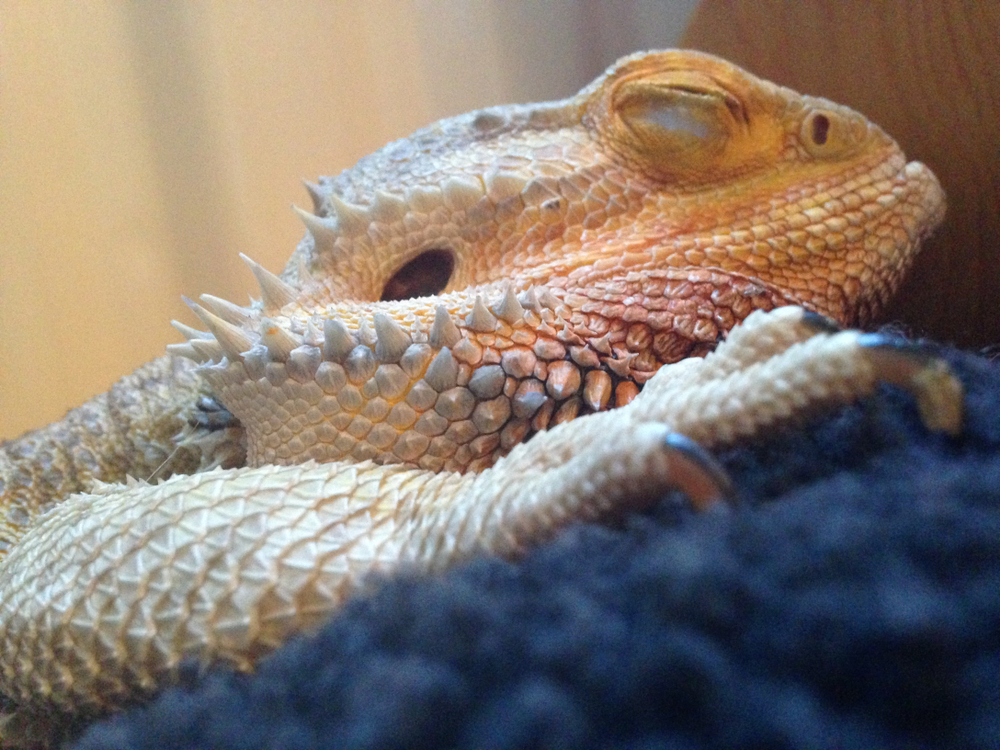
Although bearded dragons don't hibernate — like you might envision a bear sleeping through the winter months — beardies over 10 months old do something similar called brumation.
Brumation is when the pet slows down their bodily functions (eating, walking, climbing, pooping) and metabolism to conserve energy. You might notice the pet resting for long periods in dark areas of their habitat during the colder days of the year. This is completely normal.
What's not normal is to see no movement from your pet. A bearded dragon that is brumating should still have some awake time each day. If you notice a lack of movement, weight loss, a change in color, or a darkening of the pet's beard, it's time to call the veterinarian for a consultation.
Color-Changing Beard
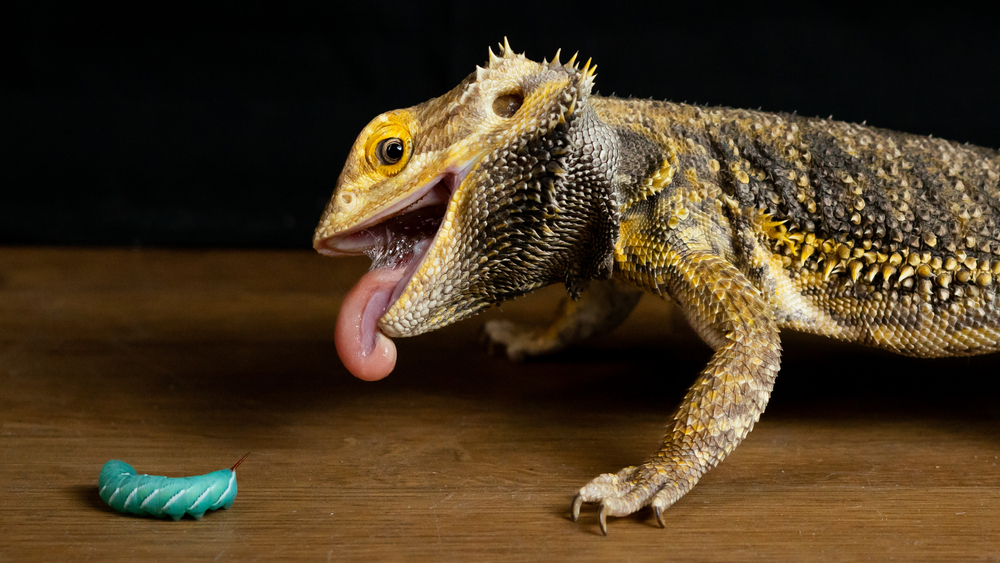
Let's understand that fancy reptile beard a bit more. Think of the scaly appendage as a barometer of your pet's physical and mental health. When things are off balance, the beard darkens to a nearly black color to let you know the pet needs some TLC.
You might notice a darkened beard when the pet is:
- Feeling fearful. Is the family cat too close to the tank? Is the pet being handled without a gentle touch?
- Experiencing anger. Is the toddler tapping on the glass of the pet's habitat? Did you forget to feed the pet and skip your usual playtime?
- Lonely. Did you give the beardie attention, gentle handling, and tidy the habitat today?
- Stressed, anxious, or sick. Is the pet also lethargic, not eating, or acting "off"? It's time to call the vet with your questions.
- Feel chilly. Is their heat bulb burnt out? Did the heating mat get unplugged?
- Adjusting to a new environment, person, or enclosure. The move from a pet store to your home is exciting for you, but initially scary for a pet. Ditto for when you buy the pet a new habitat. Soon they will realize they have all they need to feel safe and cozy!
- Trying to find a mate. Is the pet bobbing their head too? They're looking for a little companionship.
- Feeling cramped. If you house several beardies, they might be signaling to their buddies which area of the habitat is their territory.
- Being handled too much. A blackened beard may signal it's time for a break and the pet wants to rest.
Bath Time
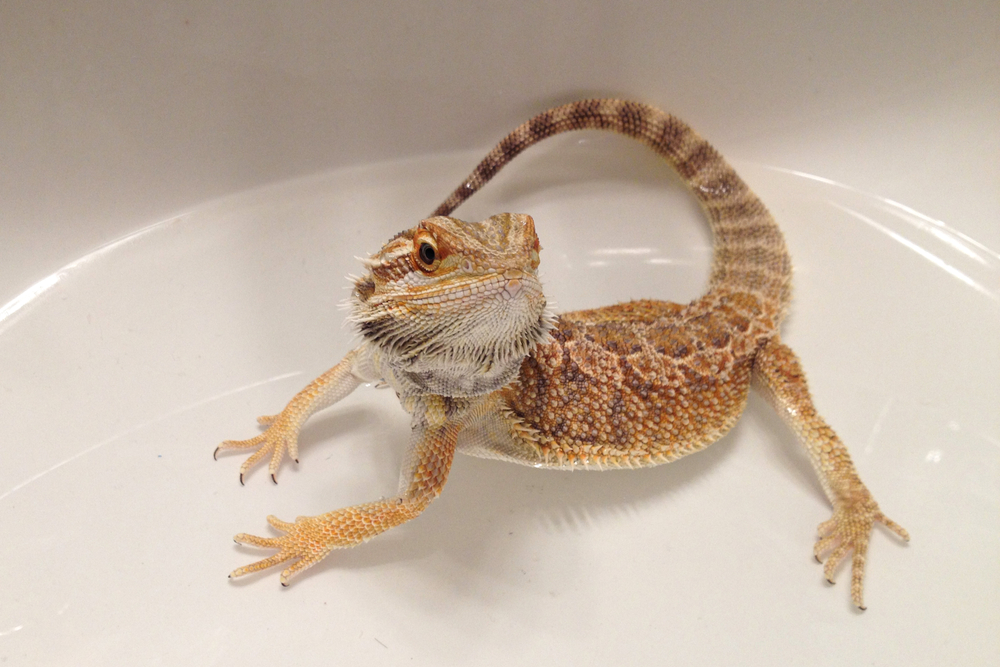
Offering a beardie a warm water soak is a good idea. Not only does a bath encourage healthy bowel movements and assist with shedding, it can also be a simple way to ensure proper hydration when the pet is brumating.
And of course, a bath washes away any bedding dust or dirt stuck to your pet's scales. We all like that fresh, squeaky-clean feel after a nice soak!
Pro Tip: Pair bath time with shedding time, deep cage cleanings, or during brumation.
Bearded dragons make wonderful reptile pets. They are sociable, gentle, and enjoy making a human their BFF. We hope you learned a few new things about beardies in this guide and feel ready to adopt a pet dragon of your own if that seems like the best fit for your household. Here's to making new scaly friends!
